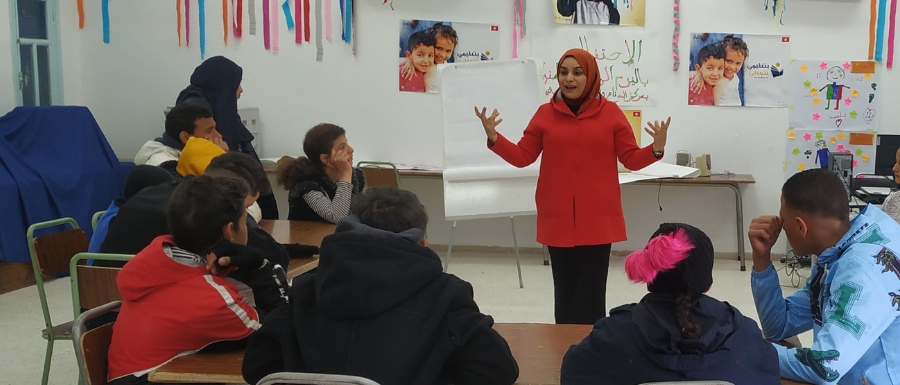The Ena Creator project sought to contribute to the creation of a culture of initiative and leadership for 15 young people between the ages of 12 and 16 through reflective, artistic, cultural and design-thinking activities with the aim of integrating them into the community. The project lasted four months, from November 2022 to March 2023.
In addition, the project aimed to build a culture of initiative, leadership and life skills for vulnerable young school dropouts through creative and exploratory ways. It helped introduce them to entrepreneurship and work principles through planning, teamwork and design thinking activities. The aim was to connect them with the local community through field visits and community mobilisation.
The approach used is inclusive and duly adapted to the capacities of the participants and their learning abilities. It is also collaborative in that it relies heavily on the cooperation of various stakeholders, such as CDIS (Public Centre for Advocacy and Social Integration) staff, the LDA team, facilitators, local artisans and family members.
The project is a follow-up to fellow Maroua Ghith’s participation in the Professional Fellowship Program PFP, sponsored by the US Department of State, Bureau of Culture and Education, and administered by Legacy International. The fellow implemented the project with the support of the Local Democracy Agency Kairouan-Tunisia.
The fellow, due to her placement in Washington DC at the Project Create arts centre, endeavoured to contact several key stakeholders, who were extremely important for the project and its objectives.
The target group consisted of 15 children between the ages of 12 and 16, who belong to the Centre de Défense et D’Integration Sociale (CDIS), a public institution attached to the Ministry of Social Affairs. The mission of the institution is to provide services to vulnerable young people who have dropped out of school and are under the age of 16, in order to protect them from risky behaviour. Young people with disabilities from partner organisations also participated in some project activities.
The Joint Civil Society and Democracy Organisations’ Priorities for the Defence of Democracy Package aims at strengthening democratic resilience, at promoting, supporting and protecting democracy worldwide
Project activities:
The project implemented 03 sets of activities which included community meetings and multi-stakeholder meetings where more than 20 actors participated. The topic of discussion was the role of culture in the economic inclusion of youth. The first set of activities also included two family meetings on learning and behavioural disorders and agricultural economic inclusion.
The second set of activities consisted in capacity-building training covering communication and leadership, qualities and characteristics of the young entrepreneur, mind-mapping activities to analyse the problems of the local context, and how to plan activities through applying the business canvas model.
Finally, the Ena Creator project included field visits to the National Museum of Islamic Art and a craft workshop using cartoons to create prototypes of monument silhouettes. It was also possible to organise a tour of the old city of Medina, where numerous traditional shops are located.
Results:
The 15 young people gained new knowledge about communication and the approach to communicating their needs and aspirations. They also participated in training sessions on entrepreneurship (e.g. entrepreneurial qualities, ideation through mind-mapping activities and action plans using the Business Canvas model). They developed 03 action plans that they designed in teams.
The project helped participants learn more about their communities and their history through field visits to different cultural sites and explored the different ways in which culture, art and heritage can be harnessed in successful careers.
Furthermore, about 25 local stakeholders (social affairs representatives, civil society organizations, CDIS staff, families, academics, cultural associations, and other actors…etc) participated in the different activities, discussing about the role of culture, heritage, and artwork in the economic inclusion of vulnerable youth, and exchanging ideas and best practices.
This work helped the target group to connect with professionals and institutions. It helped them building their capacities and imagine their future path at a young age and connect with their local culture as a source of identity and social and economic inclusion.
